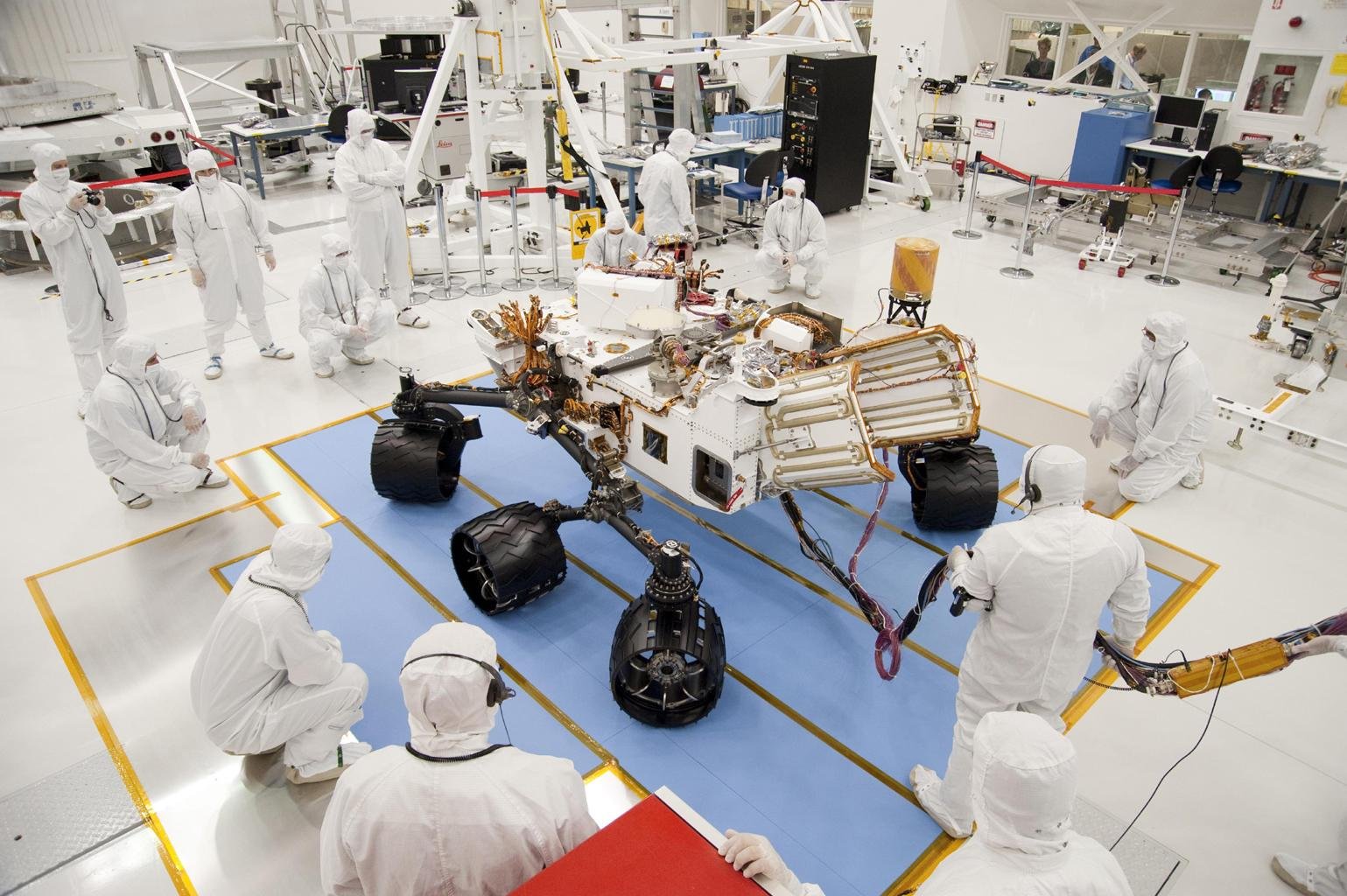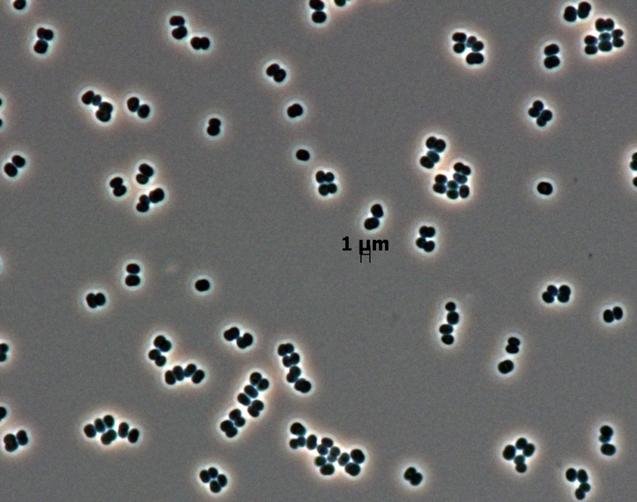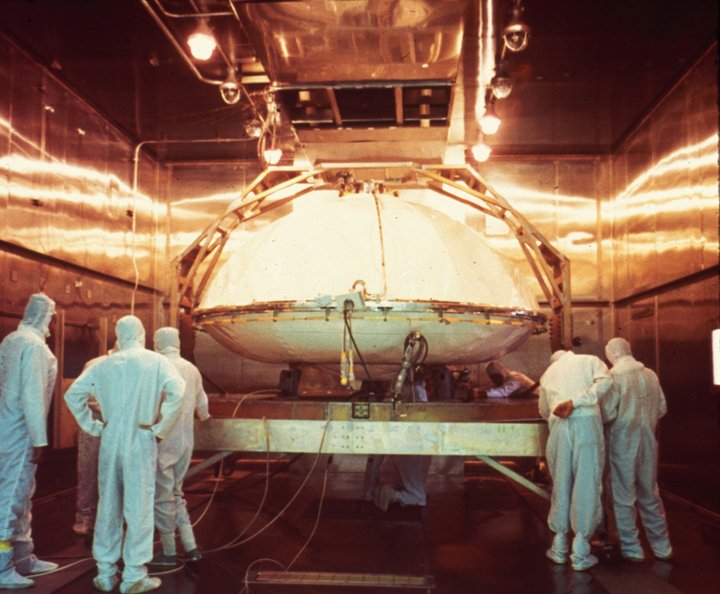Microbes? In my clean room? It's more likely than you think.
One of the articles making the rounds in the news recently is about the 'discovery' of microbes living in the clean rooms NASA uses to assemble spacecraft.

Executive Summary
- We have identified metabolically active bugs in NASA clean rooms
- Finding just bugs themselves is not newsworthy, but they survive by eating the alcohols and detergents used in cleaning
- Some bugs are really good in nutrient-poor conditions, but at a cost
- Finding out about them is one more small step towards planetary protection, which is a Good Idea.
Intro
First off, the existence of bugs in those places is, in itself, not news. We've known and have cataloged bugs in those places for a while. What is interesting is that we've recently figured out that some of them are not persisting in a dormant state, but are actively growing and we even know how some of them are doing it.
Even professional scientists reference Jurassic Park
When we find live bugs in an environment, that doesn't necessarily mean they're doing all that much. They could be in a semi-dormant state, just waiting for better times to roll along. It's not a surprise to find some dormant bugs in a clean room (which isn't the same as sterile - the standard for mars missions is to prevent exporting more than 300 spores/m2).
What is cool is that we now have confirmation that some of bugs detected are active in those rooms. Specifically, Dr. Mogul's team has figured out that when there's not much else to eat, Acinetobacter (which is notoriously hardy anyway) can switch to eating the traces of alcohols and even detergents used to clean the rooms. How badass is that?!
The tendency for bugs to grow in any environment if there's some way to make an energetic profit has been a recurring theme in my posts and it's no different here. The lead author even mentions that 'life will find a way' and directly acknowledges Malcom, et al. in Jur. Par. (1993).
Being a specialist comes at a cost
Although bugs are good at finding a way to live in low nutrient conditions (oligotrophs), living frugally comes at a cost, no matter how you achieve it. If you're Acinetobacter, the ability to switch from eating all the normal foods to low-yield stuff involves the burden of carrying all that extra genetic material to do so, sensing your environment, and giving true specialists a head start while you ramp up your alternate metabolic pathways.

Another strategy is more hardcore - some bugs decide that they won't simply tolerate low nutrient conditions, but specialize in them. The cost here is that although they'll thrive in in their niche, they will almost certainly be outcompeted by others in times of plenty. For example, there's one genera Tersicoccus that so far has only been found in clean rooms.
To be clear, that doesn't mean Tersicoccus evolved to live in clean rooms, specifically. Just that it's unlikely to be found in abundance relative to generalists in places that aren't so extreme. For example, there's another bug (Paenibacillus phoenicis) which is also pretty limited to clean-rooms, but has also been detected in boreholes a few kilometers underground.
All these worlds are yours except Europa. Attempt no landing there.
Why is this a concern? Unlike other clean rooms, such as integrated circuit factories or some surgical theaters, we're not as concerned with what's coming in as we are with what's going out.
As part of its mission of planetary protection (yes that's a thing, you can even apply to be an officer), NASA is trying to prevent accidentally contaminating other planets with microbes from Earth.

The main concern right now is making sure that if we detect life on other worlds, we know that it was indigenous and not a false signal from a hitchhiker. We can do this by comparing what we find to our growing catalog of clean room bugs.
That is a laudable goal, but I personally find myself also worrying about introducing invasive species. Think about how rats on ships can get onto an island and completely kill off the native fauna (at least, without massive intervention, they can).
Now, think about how, if we're honest, so much of our space research is at it's heart based on a yearning to find out we are not alone. Try to imagine how heart breaking it would be to find out that we weren't alone, until we introduced the equivalent of space rats to Europa, killing off all the native bugs under the ice with, I don't know, a particularly hardy form athlete's foot.
The idea of wiping out other, independent life is a what philosophers call a 'bummer', so here's an uplifting tidbit. Part of the regulations for planetary protection stem from the 1967 Outer Space Treaty. In reading about that, I found about about the term 'space law'. Yes, space law is a thing.

Bugs in the news? What's that?
Some of you may have noticed that my articles tend to be rather, well, long. I really enjoy doing deep dives on topics and relating them to broader themes, but that type of article isn't perfect for everything.
Specifically, it doesn't lend itself to timely, concise communications about microbial news. I often want to geek out about these, so partially as an excuse to do just that and partially as practice on more rapid, condensed (I'm aiming for 500-1000 words) writing, I've decided to give Bugs In the News a try.
Apart from the size goals, I'd like to use these to provide an insider's view on why the news items are (or aren't!) exciting and expand upon their implications in an engaging way. I'd also like to use at as an opportunity to back-translate when a science journalist gets an idea wrong or misses the point (not hating, it happens to all of us!). I'll be experimenting with the tone, frequency, and format and would really appreciate feedback.
I can also promise you two things:
- I won't ever just rehash press releases. I will endeavor to make reading my article worthwhile beyond the news article. Hopefully by expanding upon the relevant themes and synthesizing multiple views, but at least by making it more accessible and engaging.
- I very much enjoy my deep dives and won't be abandoning that format. Those of you with insomnia can rest assured there are more 2500+ word monsters in the pipe.
